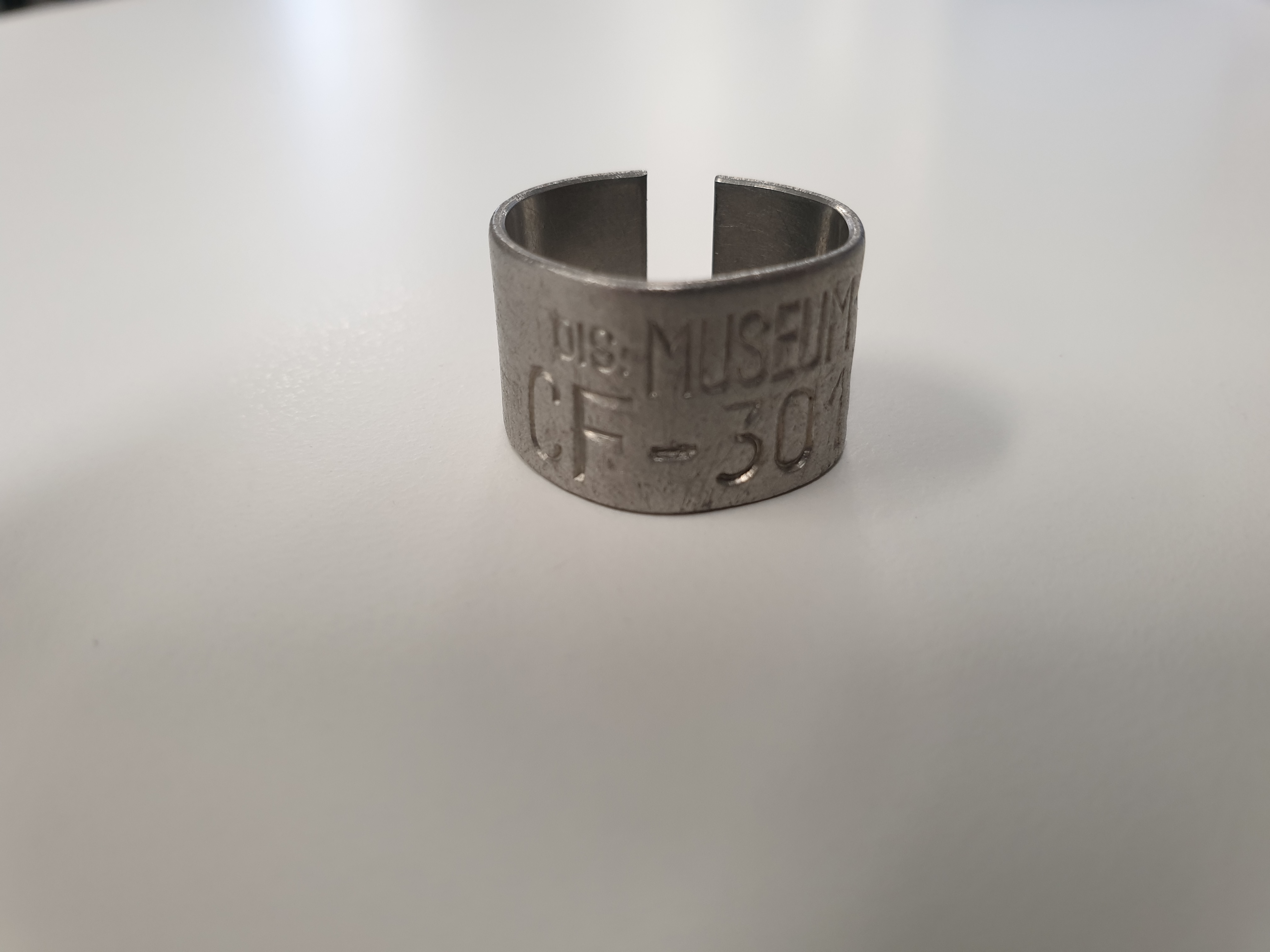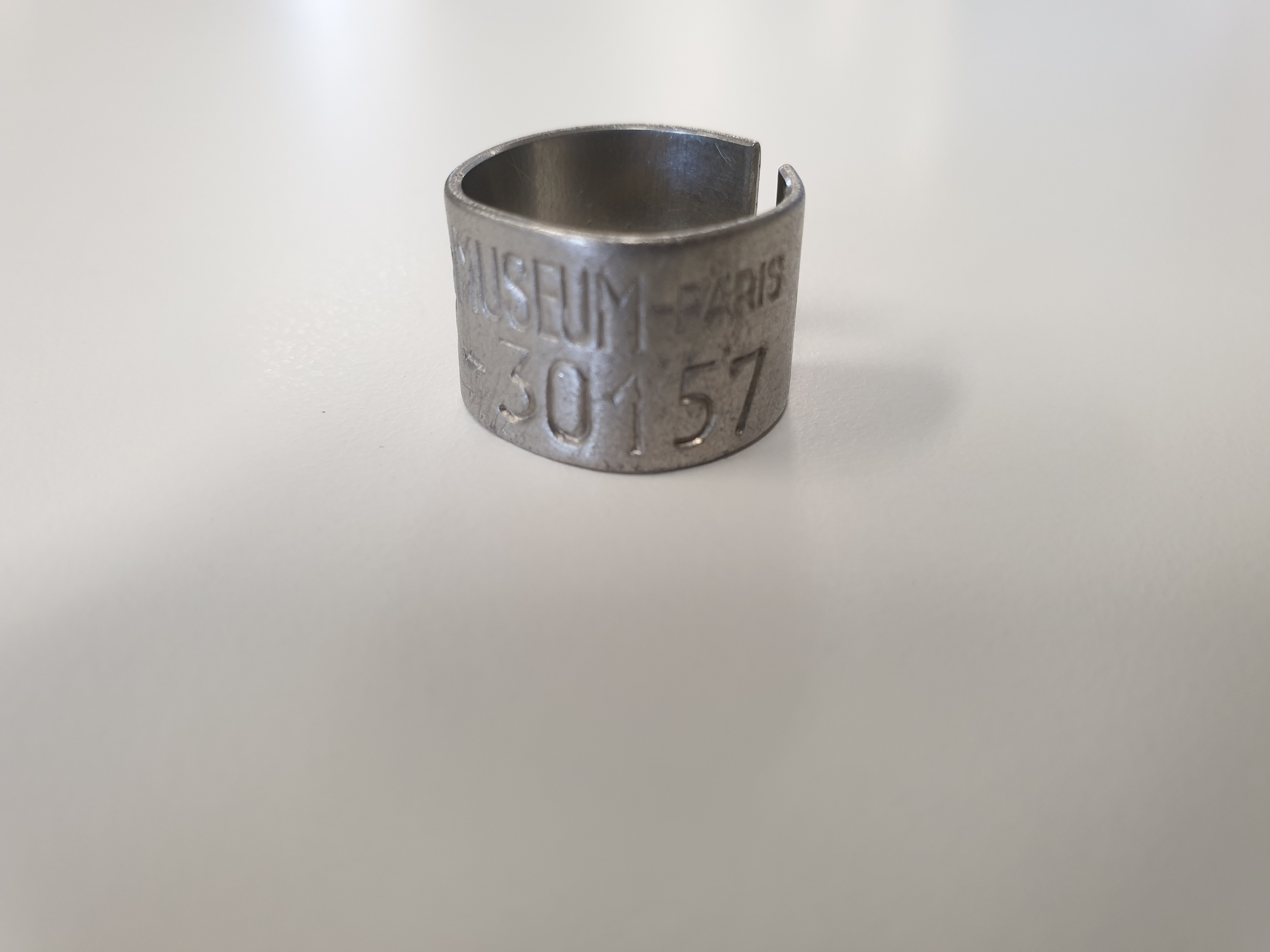
Southern Giant Petrel and chick, Pointe Geologie, Dumont d’Urville Station, Antarctica, photograph by Christophe Sauser
The corpse of a banded Southern Giant Petrel Macronectes giganteus was recovered from the shore at Flat Point, Wairarapa, North Island, New Zealand around 10 June 2020. Brent Plaisted writes: “I observed the petrel about 48 hours earlier on the beach alive but not very active, it walked to the sea and swam away, the next day was much the same but slightly more distressed. I did consider capturing it and taking it for medical help but again it headed to the sea. When I found it washed up dead it was fresh and in poor condition. It felt quite skeletal with not much meat on its bones.” In correspondence he informs ACAP Latest News that there was no particularly bad weather at the time. No autopsy was carried out so the cause of death remains uncertain.


Museum Paris CF-30157
The bird was banded by Luc Jacquet while overwintering at France’s Dumont d’Urville Station in Adélie Land, Antarctica as a chick on 01 February 1992 with metal band CF-30157 and an engraved plastic band white 332 in the long-term monitoring colony at Pointe Géologie. Banding activity at the colony forms part of the project “Seabirds and Marine Mammals as Sentinels of Global Change in the Southern Ocean” (Project: 109 ORNITHOECO), supported by the French Polar Institute Paul Emile Victor (IPEV). Only the metal band was found on the corpse, but Southern Giant Petrels (especially the males) are known to be able to wear out both their metal and colour bands in a few years due to their habit of shuffling around on rocky ground. However, the recovered band (see above) shows little sign of wear, so perhaps the recovered bird was a female. No sightings of the petrel had been made in the 28 years between banding and recovery.
With thanks to Karine Delord, Centre d'Etudes Biologiques de Chizé, France; Nikki Gasson, Department of Conservation, New Zealand; and Brent Plaisted.
John Cooper, ACAP Information Officer, 10 November 2021, updated 15 November 2021

 English
English  Français
Français  Español
Español